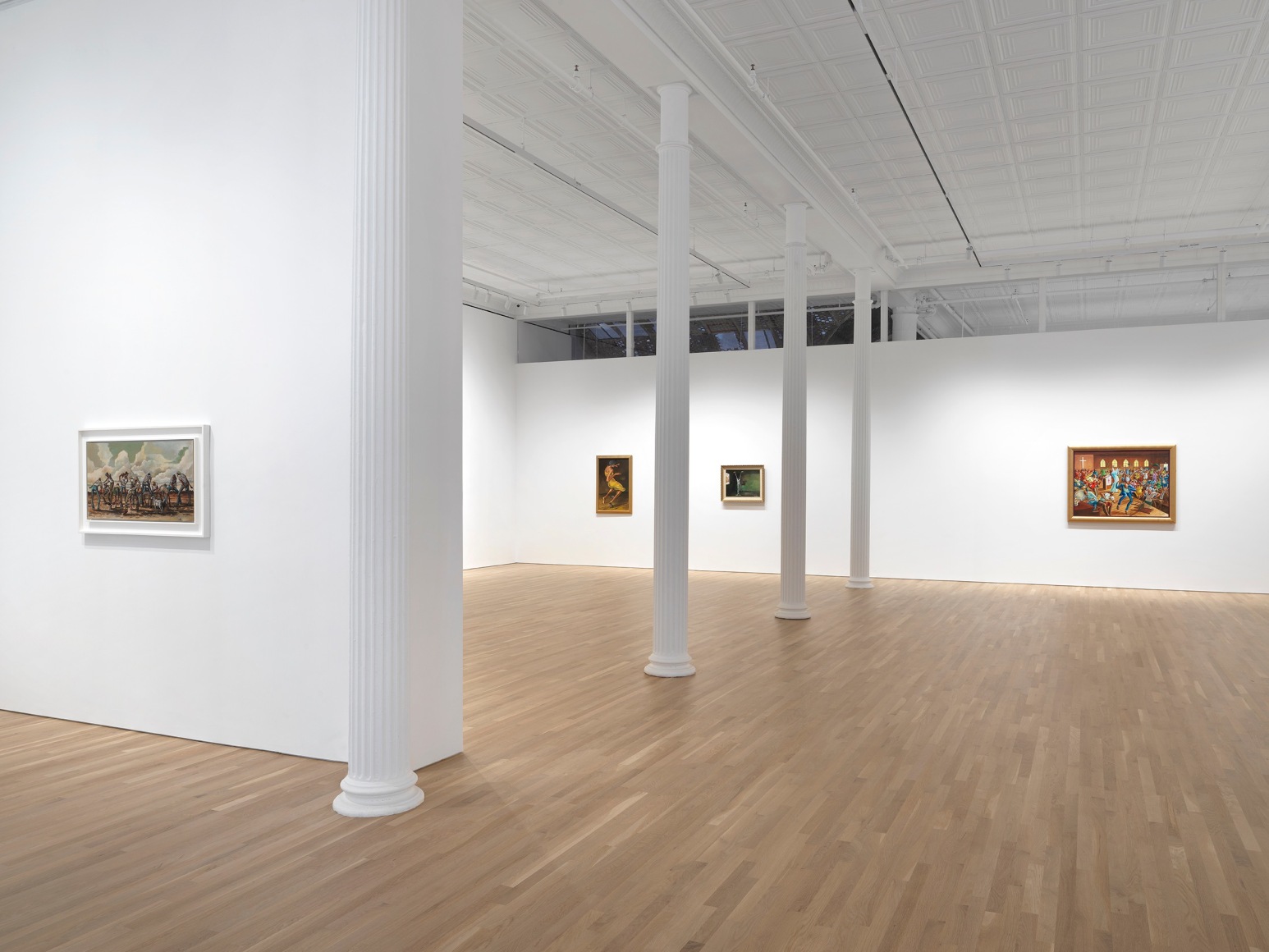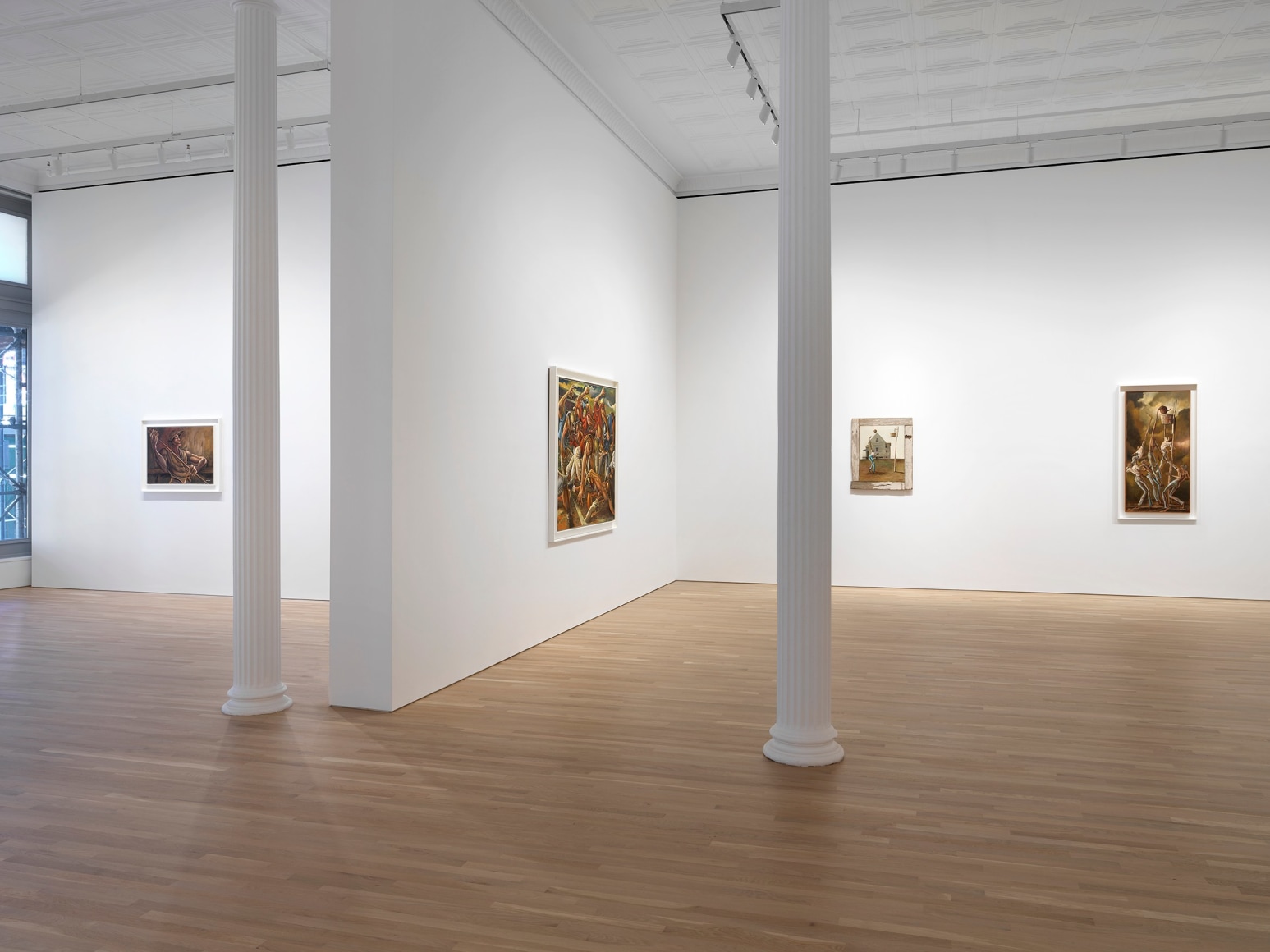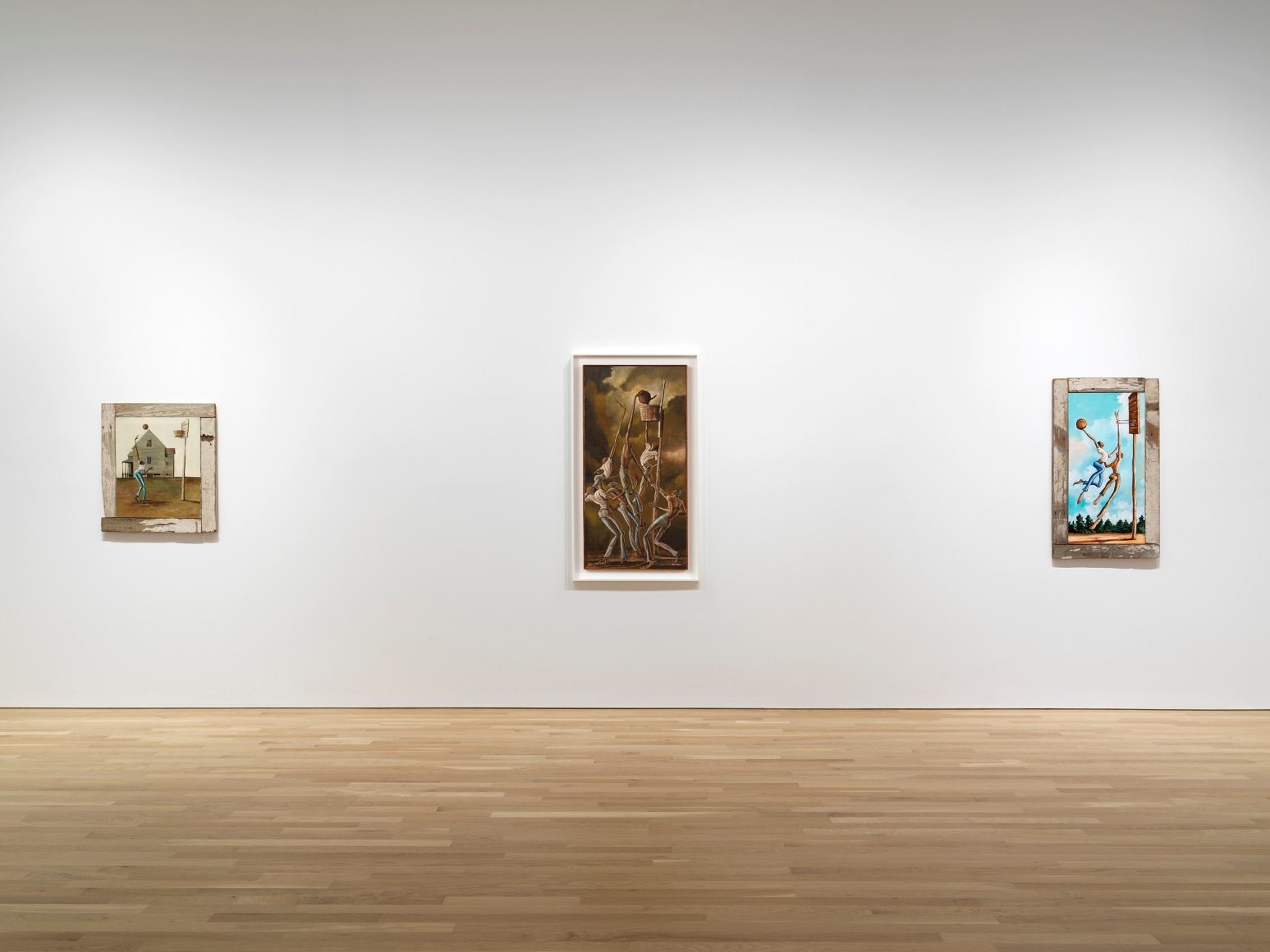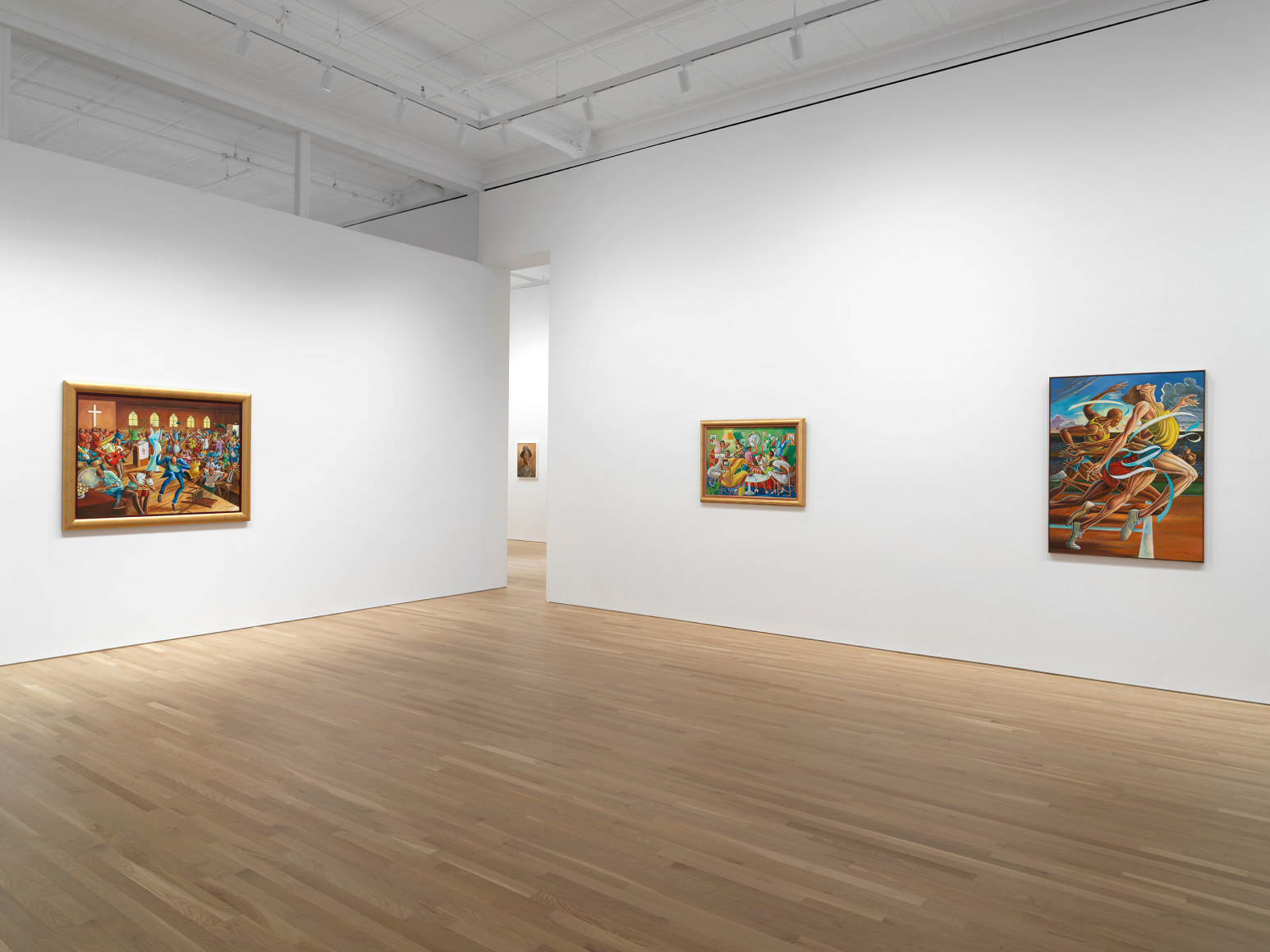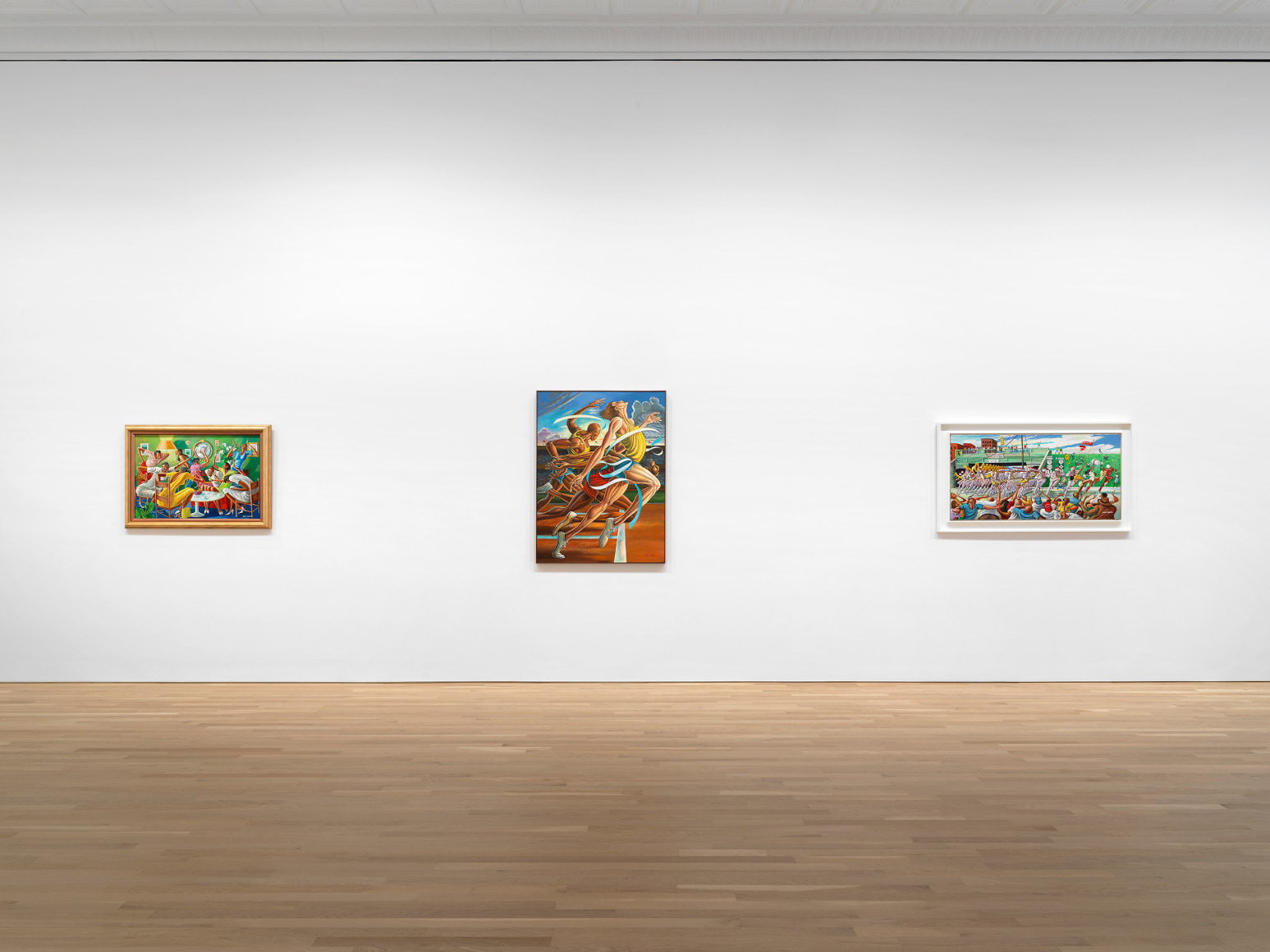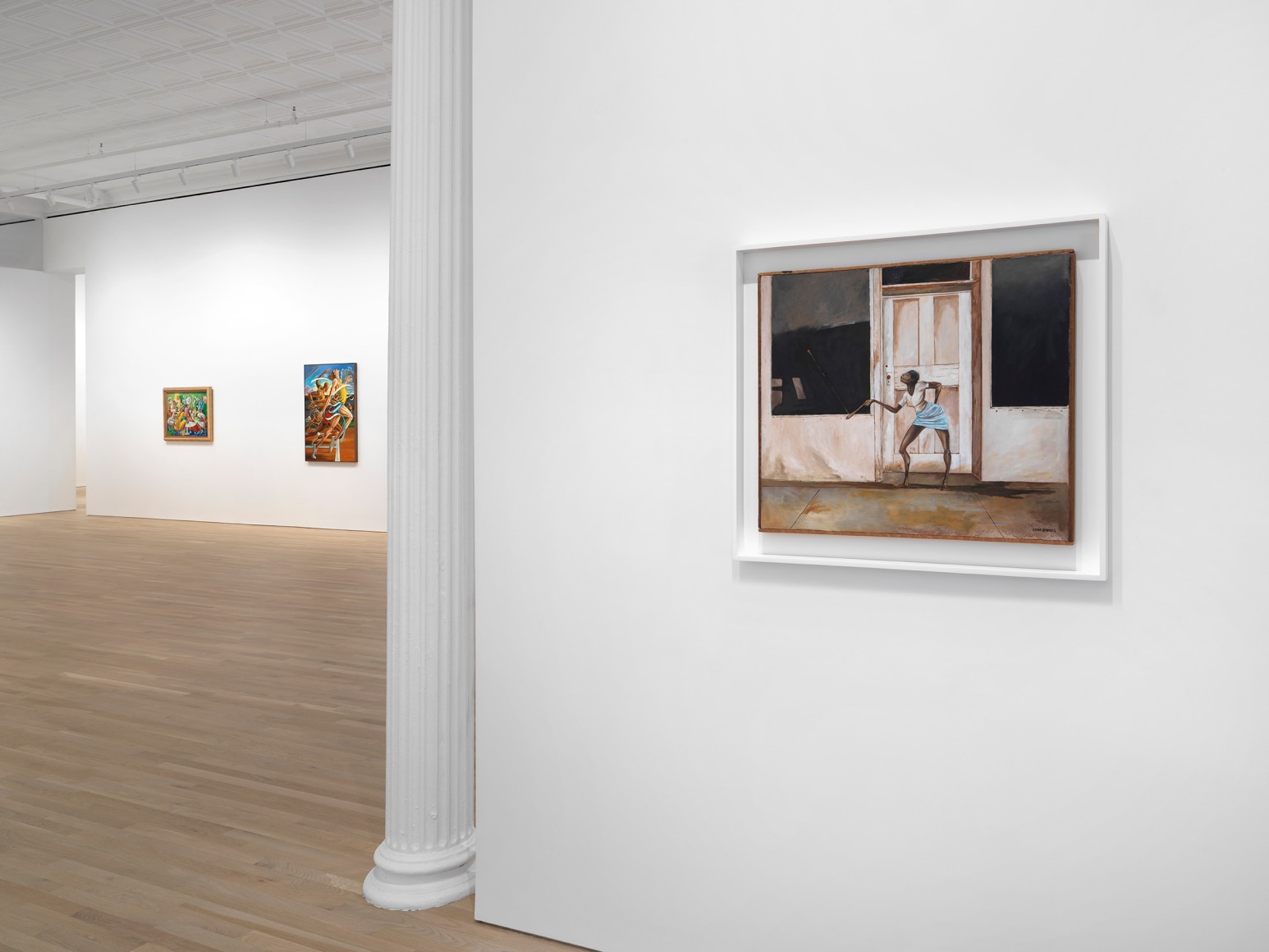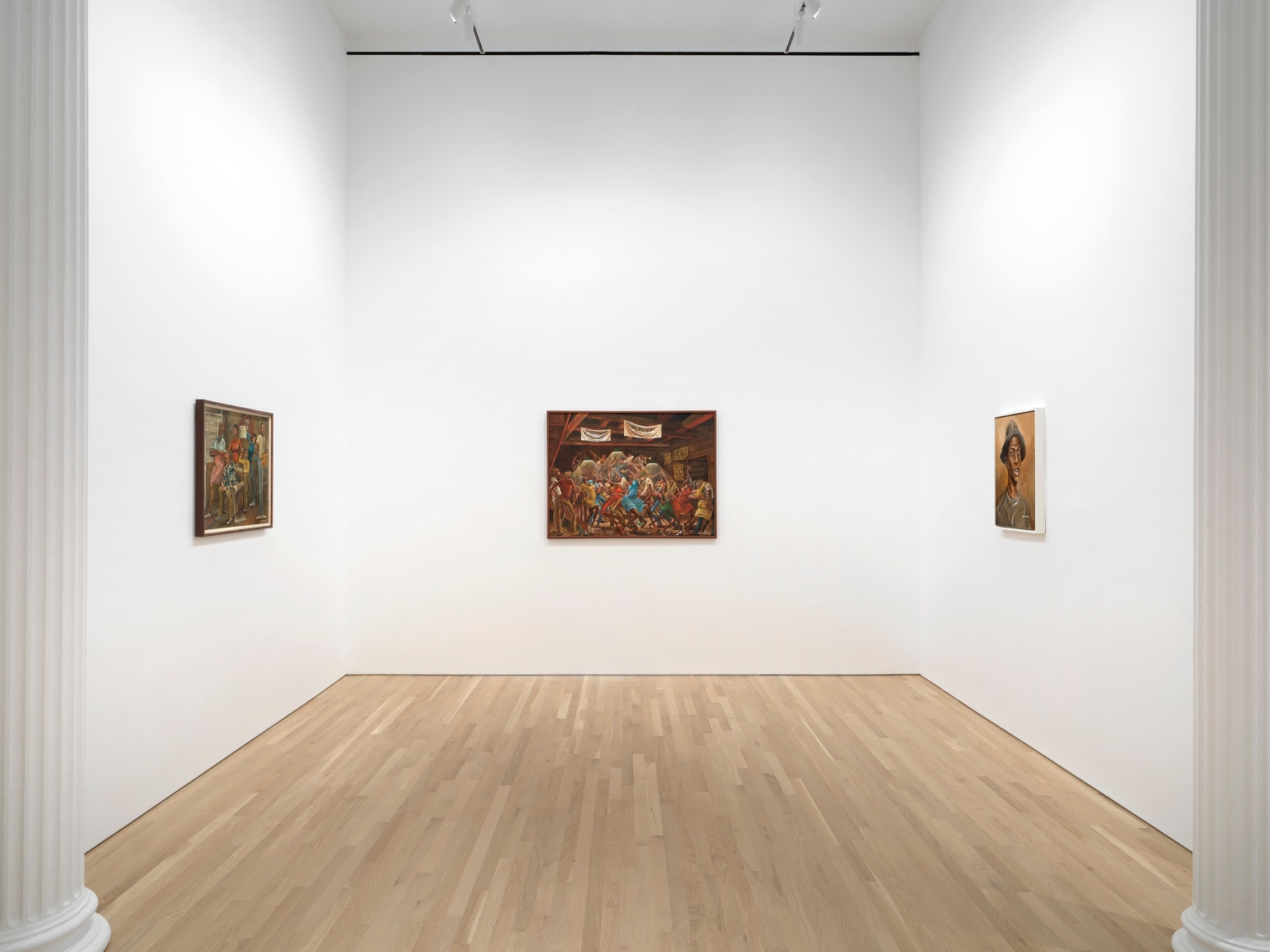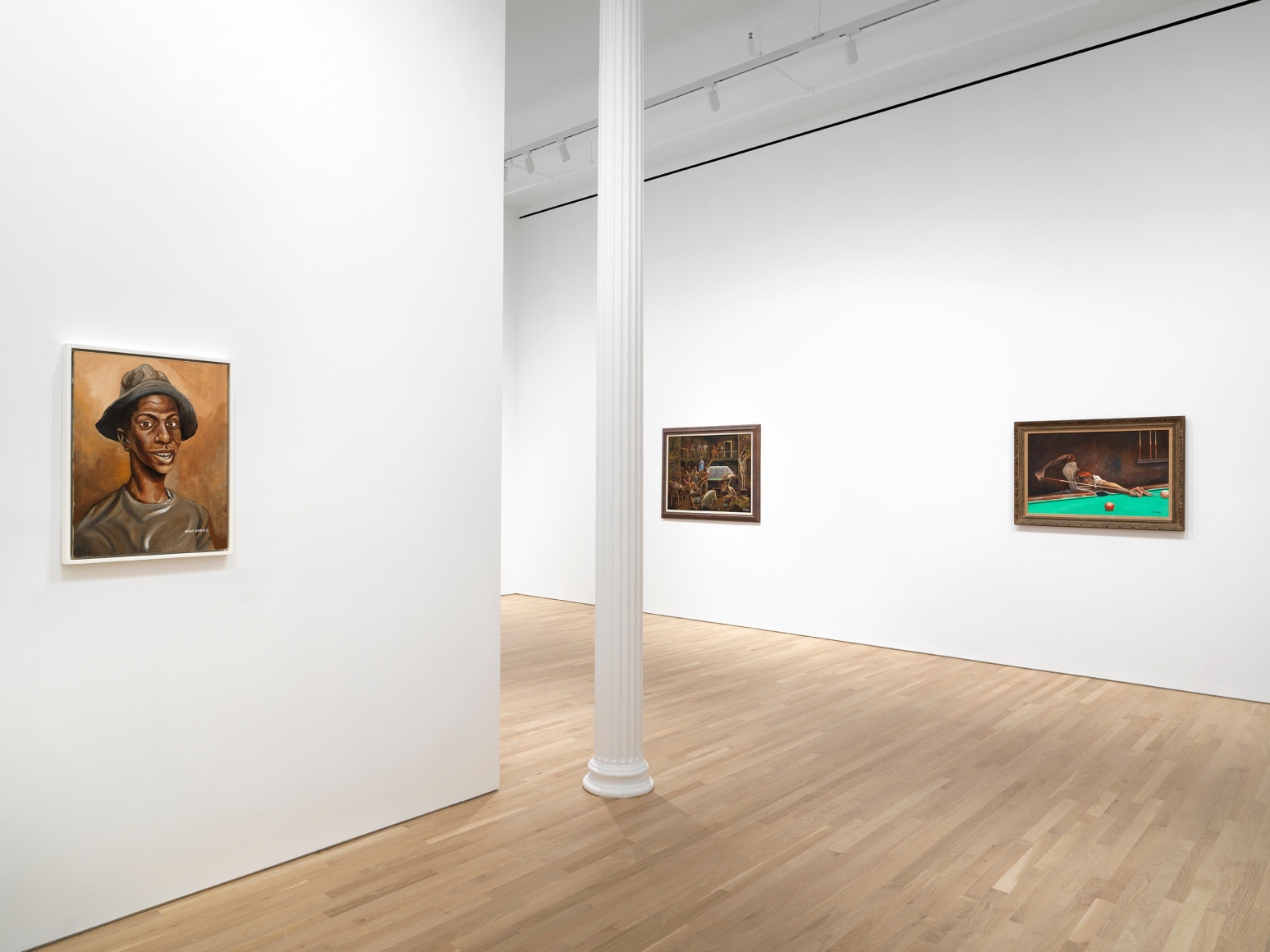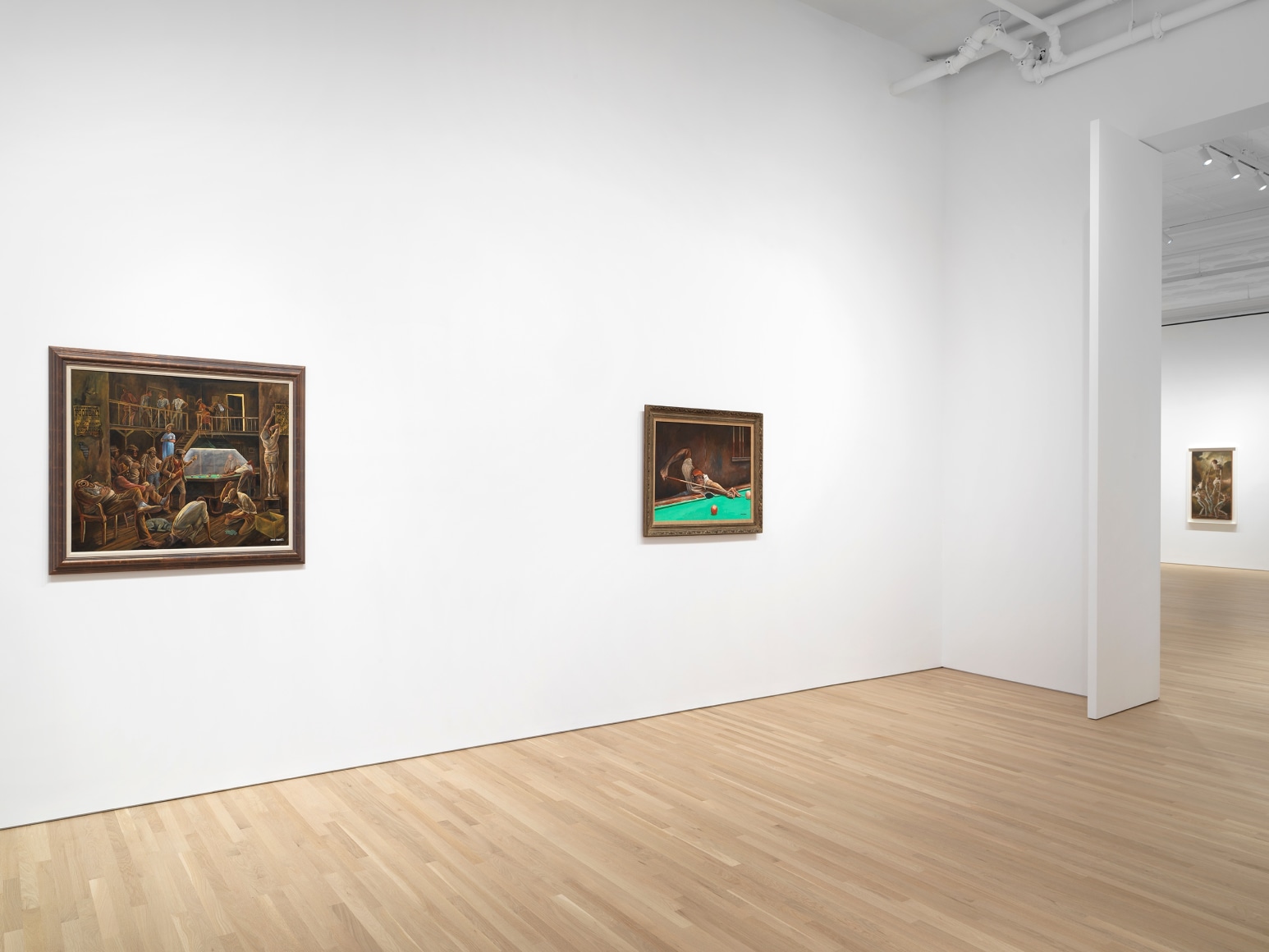Ortuzar Projects is pleased to present Ernie Barnes: In Rapture, the gallery’s first exhibition of the late figurative painter Ernie Barnes (1938-2009) in collaboration with Andrew Kreps Gallery. Spanning five decades of Barnes’ career, this survey features genre paintings of sports, dance, musical performance and the joys of everyday life in his signature “neo-mannerist” style. Tracing the throughlines of elation and bodily movement throughout Barnes’ oeuvre, from early sports paintings to his mutual influence on popular culture, this exhibition pulls its title from the painting In Rapture on the cover of B.B. King’s 2000 album Making Love is Good for You.
In his paintings, Barnes animates the lyricism of the human body in moments of athleticism and play. Barnes’ sinuous figures were inspired by both the Italian Mannerists and twentieth-century American masters, such as Thomas Hart Benton, Andrew Wyeth, Norman Rockwell, George Bellows and Charles White. Born and raised in Durham, North Carolina, at the height of the Jim Crow era, Barnes’ interest in art was cultivated by his mother, the housekeeper for Durham attorney Frank L. Fuller, Jr. Though segregation barred him from visiting museums as a child, Barnes was able to read art books at Fuller’s home before studying painting at North Carolina Central University (formerly North Carolina College) on a full athletic scholarship.
As an undergraduate, Barnes honed his skills in track and football while studying art under the direction of sculptor Ed Wilson, who helped him understand the significance of painting one’s immediate environment. In 1959 Barnes joined the American Football League (AFL) as a lineman for the Baltimore Colts before joining the Titans of New York in 1960 as an offensive guard. In turn, Barnes painted motion-heavy paintings reminiscent of Bellows’ depiction of boxers. Early ’60s paintings, such as We Love Our Team (1966), memorialize these early years, and later works like Fumble in the Line (1970) capture groups of elongated, sinuous players in motion. Barnes left the AFL in 1965 and became a full-time artist. With the support of New York Jets owner, Sonny Werblin, Barnes became the official artist of the AFL a year later and would continue to integrate sports into his painting throughout the ’70s and ’80s. Barnes painted a prolific series of basketball players, such as Protect the Rim (1976) and Slam Before the Storm (1979), which portrayed figures suspended in air to conjure a sense of transcendence in sport and teamwork. After years of painting scenes of football, basketball, polo, hockey, baseball, track and field, and more, Barnes would serve as the official artist of the 1984 Summer Olympic Games in Los Angeles.
Barnes’ iconic exhibition The Beauty of the Ghetto toured American cities from 1972 to 1979. In this show, his focus shifted away from sports and towards the beauty and joy of everyday life. His paintings of joyous figures and tender scenes of community redressed the dominant paradigm of Barnes’ era that framed Black art as “culturally blind” and showcased the virtuosity and vitality of mid-century Black southern life—what Barnes referred to as the “spiritual currency of the ghetto.” The painting Stickman (1971) depicts a Black pool player poised with his cue drawn back and eyes shut. In the following years, works like Juba Dis an Juba Dat (1976) would also touch on Black culture in the south, with references to Juba: the West African percussive dance adopted by slaves in the Antebellum South as a powerful form of musical resistance.
The circulation of Beauty of the Ghetto in the 1970s was pivotal to Barnes’ career and marked the expansion of his work into popular culture. The show piqued the interest of Norman Lear, television producer and co-creator of the CBS sitcom Good Times (1974-1979) centered on a two-parent Black family living in a Chicago housing project. Actors Esther Rolle and John Amos starred as the parents of the fictional Evans Family, and the eldest son—an artist named JJ—was played by Jimmie Walker. Some of Barnes’ paintings from this traveling exhibition, such as Street Song (1971), featuring an acapella quartet harmonizing together with fingers snapping and hips swaying, became used as props in the sitcom as JJ’s own paintings. In Lear’s words, the “possibility of an artist lurking in everyone was a point I took special pleasure in when JJ’s talent as a painter unfolded.” Several of Barnes’ paintings were incorporated into the show during the run of Good Times, including some made specifically for the sitcom such as The Evans Family Portrait (1974) and Portrait of JJ (1974), as well as others from Barnes’ oeuvre, such as his famous painting The Sugar Shack (1976).
Throughout the ’70s, Barnes increasingly portrayed individuals and groups enraptured by song and dance. The passion captured in these depictions mirrors that in his sports and fanfare scenes. In his work, Barnes conveys moments of solitary pleasure as well as communal elation amongst families, crowds of fans, groups of friends and faith-based communities. Barnes’ ability to illustrate rhythm and movement inspired collaboration on album covers with musical artists, such as Marvin Gaye, Curtis Mayfield, and B.B. King, as well as music groups, such as The Crusaders and Faith, Hope, and Charity. A continuum of Black joy can be traced from Barnes’ earlier scenes of dance halls, such as Full Boogie (1978) to later paintings from the 1990s, such as Friendly Friendship Baptist Church (1994). The energy of these works runs “from the fingertips to the toes,” in Barnes’ own words, to testify to “the spiritual element of being human.”
Recent solo exhibitions of Barnes’ work include Ernie Barnes: Where Music and Soul Live, UTA Artist Space, Los Angeles (2023); Ernie Barnes, Andrew Kreps Gallery, organized with Ortuzar Projects, New York (2021); Liberating Humanity from Within, UTA Artists Space, Los Angeles (2020); Ernie Barnes: A Retrospective, California African American Museum, Los Angeles (2019); and The North Carolina Roots of Artist Ernie Barnes, North Carolina Museum of History, Raleigh, North Carolina (2018-2019), among others. His work has been featured in institutional survey exhibitions including Giants: Art from the Dean Collection of Swiss Beatz and Alicia Keys, Brooklyn Museum, New York (2024); Dix and the Present, Deichtorhallen Hamburg, Hamburg, Germany (2023); Scrimmage: Football in American Art from The Civil War to The Present, Figge Museum of Art, Davenport, Iowa and Canton Museum of Art, Canton, Ohio (2017), Jordan Schnitzer Museum of Art, Eugene, Oregon (2016), University Art Museum at Colorado State University, Fort Collins, Colorado (2015); Visual Voice, Riverside Art Museum, Riverside, California (2016); I Got Rhythm: Art & Jazz Since 1920, Kunstmuseum Stuttgart, Stuttgart, Germany (2015). Barnes’ work is currently held in the permanent collections of the African American Museum in Philadelphia, Pennsylvania; California African American Museum, Los Angeles; Pro Football Hall of Fame, Canton, Ohio; Brigham Young University Museum of Art, Provo, Utah; North Carolina Central University Art Museum, Durham, North Carolina; and the American Sport Art Museum and Archives, Daphne, Alabama, among others.
(Source)


